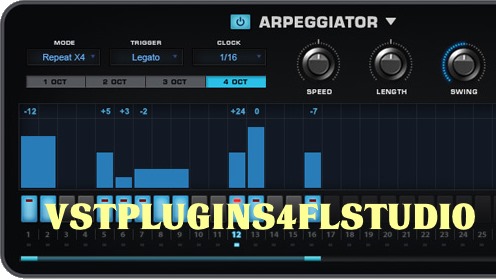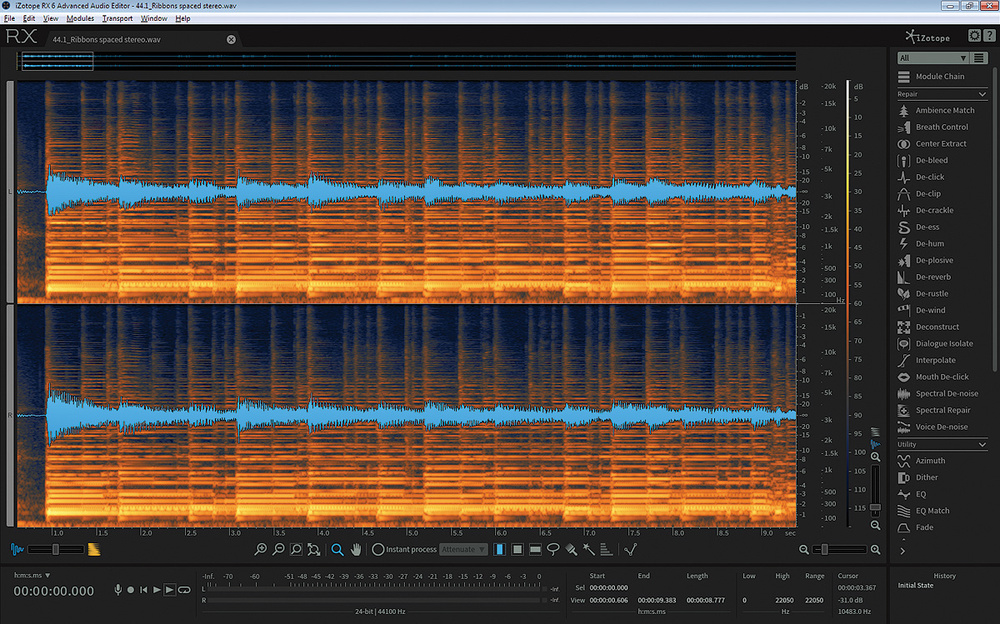Signal Generator Izotope Rx
Posted : admin On 03.04.2020- Signal Generator Izotope Rx 3
- Signal Generator Izotope Rx 3
- Izotope Rx 2 Free Download
- Izotope Rx Tutorial
Waveform Statistics
The Waveform Statistics window shows information about the waveform inside your current selection. This information can help you find and fix problems like clipping more easily. It is also useful for comparing two similar selections or files. RX treats your selection as a full bandwidth (time-only) selection when calculating these statistics.
The Signal Generator is able to synthesize silence, tones, and noise. This is useful for creating test tones, calibration tones for post production delivery specs, repairing DC offset, and even using it as a “bleep” module to eliminate obscenities in a dialogue edit. After purchasing and installing iZotope products, there are occasional errors you may run into. RX 7 Elements begins with SN-RX7ELE. It's likely due to a Firewall or Antivirus blocking the outgoing signal. Please check any relevant software you have for the quarantined files or connections.
To open the Waveform Statistics window, go to the Window menu, and click 'Waveform Statistics.' This window can stay open throughout your work to constantly monitor the statistics of any selection you make.
Waveform statistics automatically update to your current selection. If no selection is made, the statistics are collected from the entire audio file.
Signal Generator Izotope Rx 3
Using the cursor icon next to an item will move the playhead to the position in the file where the level was detected.
True peak level
Signal Generator Izotope Rx 3
The highest peak level detected, including signal levels between digital samples (called ISPs or Intersample Peaks).
True peak reflects the expected peak level of the analog waveform after digital-to-analog conversion. In practice, it is calculated by oversampling of the digital waveform according to BS.1770-3 standard. Different software may measure true peak levels slightly differently, because the standard leaves some freedom in choice of oversampling filters.
Sample peak level
The maximum level of digital samples in your selection.
Max. RMS level
The highest RMS level detected in the selection.
If downloaded file can not be extracted (file corrupted.), please make sure you have downloaded the file completely and don't use Winzip, it sucks! CAN NOT DOWNLOAD: Some probably encounter the following error: This site can’t be reached.sundryfiles.com’s server IP address could not be found. In this case, please use and you will get rid of trouble. 
RX measures RMS using 50-ms windows (more specifically, a Hann window with a 100-ms period) and references levels using either an AES-17 standard (full-scale sine wave = 0 dB RMS) or a 'scientific' standard (full-scale square wave = 0 dB RMS). These RMS measurement standards differ by 3 dB and can be chosen in RX Preferences.
Min. RMS level
The lowest RMS level detected in the selection.
Total RMS level
The RMS level of the entire selection.
Possibly clipped samples
The number of samples where the true peak signal level exceeds 0 dBTP.
DC offset
The amount of DC offset, in percent of the full scale. Hover this value with your cursor to see this level in decibels.
Max. momentary loudness and Max. short-term loudness
The maximum levels of momentary loudness and short-term loudness (as defined by BS.1770). Momentary loudness is computed on a K-weighted audio signal using 400-ms windows. Short-term loudness is using 3000-ms windows.
Integrated loudness
Displays the integrated loudness level (as defined by BS.1770-2). Settings in the Loudness module may switch this field to BS.1770-1 standard.
Loudness range (LRA)
Displays the loudness range (as defined by BS.1770). This value reflects the dynamics of audio levels in the selection.
Signal Generator
Izotope Rx 2 Free Download

The Signal Generator is able to synthesize silence, tones, and noise. This is useful for creating test tones, calibration tones for post production delivery specs, repairing DC offset, and even using it as a 'bleep' module to eliminate obscenities in a dialogue edit. The Signal Generator module is capable of generating extremely accurate test tones for research and testing purposes.
To open the Signal Generator module, go to the Window > Modules menu and click “Signal Generator.”
Silence
Silence generates digital silence, which can be used to adjust spacing or duration of your recording. DC offset feature can create or remove positive or negative amounts of the DC offset.
Tones
Tone shape
Tone shape allows you to choose the waveform for the signal to be generated, with a choice of:
- Sine
- Triangle
- Sawtooth
- Square
Freq
Sets the pitch, in Hz, of the signal to be generated, as well as whether you’d like it to move (sweep) over time, or modulate at a certain rate.
Amp
Amp refers to the amplitude of the tone, and much like freq, allows you to adjust both the start and end points in dB for the amplitude, if you wish for it to change over time.
Antialiasing
All test tone shapes, except the sinusoid, contain an infinite set of harmonics. When Antialiasing is not selected, these tones are generated in a 'naive' way in the time domain. It leads to aliasing (folding) of higher harmonics into the audible range, which often sounds undesirable. When Antialiasing option is enabled, these higher harmonics are filtered out with a linear-phase low-pass filter. It prevents aliasing, but introduces some ringing into the waveform, which is usually not a problem, because it is concentrated near half the sampling rate.
Higher quality of antialiasing produces a filter with a sharper frequency cut, which retains more of the useful harmonics and rejects more of the aliased harmonics, at the expense of more time-domain ringing and slower processing.
Level
Specifies the sample peak level of the synthesized waveform in dBFS. When Antialiasing is used, actual sample and true peak levels may exceed the specified peak level due to filter ringing.
Noise
This allows you to generate noise of many different types, with a user definable RMS level. These noise types are:
- White Gaussian
- White triangular
- White uniform
- White binary
- Pink
- Brown
Noise color defines the spectral shape: white noise has flat power spectrum, pink noise decays at 3 dB/octave rate, while brown noise decays at 6 dB/octave rate.
Gaussian, triangular, uniform, or binary relates to the p.d.f., or probability distribution function, of the noise. It describes how often samples of different amplitude are encountered in the signal. For example, uniform p.d.f. means that all amplitudes below noise peak level are equally popular.
Pasting mode
These pasting modes affect how the signals generated will be placed into your audio file.
Replace
Replace will completely replace the audio in your selection with the generated signal.
Mix
Mix will retain the audio in your selection, and mix in the generated signal.
Insert
Izotope Rx Tutorial
Insert will allow you to set a custom duration, in seconds, and the Signal Generator will then insert this audio, increasing the length of your audio file by the amount prescribed.